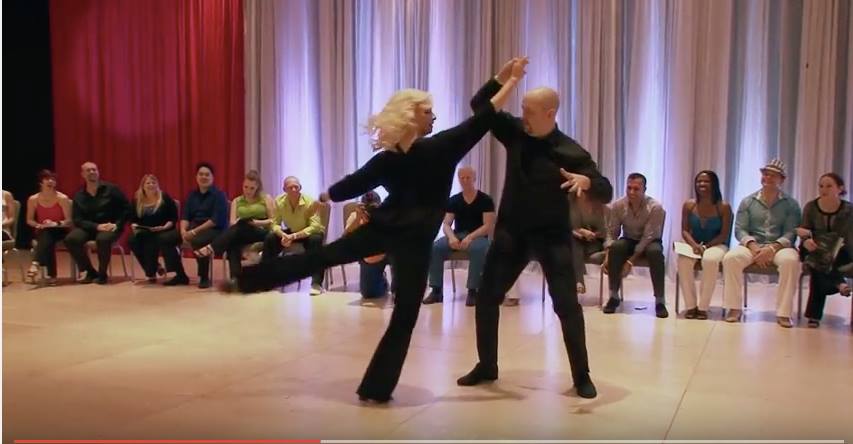Every year, a 5-Day West Coast Swing (WCS) dance camp is held in Ancaster, Ontario. That’s 5 days of workshops, assessments, and coached practices, from morning to night. It’s quite the endurance run. And it’s often a painful process, as I discovered last year.
So this time, I kept a record of my journey, as a reminder to others who sometimes face doubts and negative thinking in their learning process; that they are not alone, and yes, it does get better.
Day One:
From the first dance, I can tell this year at dance camp is going to be a challenge - there’s a lot of talent in the room. Our coaches - Matt Auclair, Debbie Figueroa, and Cameo Cross - start us off by assessing our abilities to determine what classes are best for us.
Musicality assessment starts with a blues song. I’m terrible at styling to blues, where the instruments seem to have a mind of their own, but I struggle through as best as I can. The next two songs are easier, and I my body starts to remember my training.
Watching a competitive-level student dance with Matt reminds me of how intimidated I felt when I first walked into a dance hall. How do they communicate so effortlessly with each other? I remind myself that, after all, I’ve been dancing ballroom and nightclub for a lot longer than WCS.
No matter our ability level however, the love we all share for dance is so apparent it makes me smile: The flirtatious winks, the laughter and nods when a couple hits a sweet groove together, the sweaty breathing in the pause between songs. Already the room smells like hard work.
My personal challenge for the dance camp is to improve my interaction with my dance partners, by complimenting their styling with my own. So I’m surprised when Cameo asks me to remove my styling, all of it.
‘Why?’ I ask. ‘When you add your own embellishments constantly, your partner has no room for styling themselves.’ She explains. ‘You must create room for your partners to add their own expression.’ Sure enough, my partners begin to compliment me on my dancing, although it feels pedestrian to me.
Already my body feels tired, but I know it’s a superficial tired, not the deep exhaustion that will settle in by day 5. In a slightly morbid way, I can’t wait for it to come: My best dancing happens when my brain finally shuts down.
Day Two:
Feeling bleary-eyed, and one of my toes has turned the colour of well-cooked lobster, but I can’t wait to start building on what I’ve learned the day before. Already my mind is starting to go numb, which I choose to interpret as a good sign.
I manage to keep my styling down to a minimum, until one of my partners starts to really break out in her own moves. I figure ‘hey, I can dial it up a little’, until a familiar hand clamps down on my shoulder.
Crap.
‘Ian, I love your styling, really’ Matt says, with that look in his eyes that indicates there’s an inevitable but coming. ‘You just need to keep it under control’. I sigh and nod, before turning back to my partner. ‘You’re a bad influence’ I grumble, but she just grins mischievously.
At times during the dance camp, I lose myself completely in the movement, aware only of the pressure of my partner’s hand, the flexing of my tired muscles, the power coming through my feet. The strain on my overtaxed brain is building, and I have to breathe through several frustrating moments.
I do feel gratified when Matt merely asks me to rein in my left arm at the second coached practice. Limping back to the motel, I remind myself that this is just part of the process, that it has to get worse before it gets better.
I hope my thoughts from dance camp are helping you through your own dance journey. Turns out there was a lot more to say than I realized, so I’ll save the rest for next week. Happy dancing!
About the Author
Ian Crewe has been dancing ballroom for over 16 years, and has a Licentiate in American smooth and rhythm. He currently teaches at the Joy of Dance Centre, Toronto, ON, Canada. Click here to see when he's teaching.

